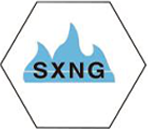
Nov . 12, 2024 19:28
Back to list
pressure regulating device
Understanding Pressure Regulating Devices
Pressure regulating devices are essential components in various industries, ensuring that gas or liquid pressures remain at safe and functional levels. These devices are crucial in applications ranging from residential heating systems to industrial processes, significantly impacting safety, efficiency, and overall system performance.
What is a Pressure Regulating Device?
At its core, a pressure regulating device serves to maintain a desired pressure level within a system. It automatically adjusts the flow of fluids or gases to keep the pressure consistent, despite fluctuations in demand or supply. Typically, these devices are found in systems where pressure levels must be managed to prevent damage or inefficiency.
There are several types of pressure regulators, including
1. Pressure Reducing Regulators These devices reduce and maintain a lower downstream pressure from a higher upstream pressure. They are commonly used in gas supply lines to homes and businesses, ensuring that the gas delivered is safe for use.
2. Back Pressure Regulators Unlike pressure reducing regulators, back pressure regulators maintain a higher pressure on the upstream side while allowing excess fluid to bypass. They are often used in processes where consistent upstream pressure is required.
3. Relief Valves These devices are designed to release pressure when it exceeds a predetermined limit, preventing system failures or explosions. They play a crucial role in safety mechanisms across various applications.
Applications of Pressure Regulating Devices
Pressure regulating devices are used across many sectors, including
- Healthcare In medical gas distribution systems, pressure regulators ensure that gases, such as oxygen, are delivered at safe and consistent pressures, which is vital for patient care
.- Oil and Gas In the oil and gas industry, pressure regulators are used in pipeline systems to maintain appropriate pressures during transportation and processing, safeguarding against leaks and ruptures.
pressure regulating device

- Manufacturing Many manufacturing processes require specific pressures for machines to operate efficiently. Regulators help maintain these pressures, thus optimizing productivity while reducing the risks associated with hydraulic or pneumatic systems operating at incorrect pressures.
- HVAC Systems In heating, ventilation, and air conditioning (HVAC) systems, pressure regulators control the flow of refrigerants and ensure that the systems operate efficiently while maintaining comfort levels in residential and commercial buildings.
Key Considerations in Choosing a Pressure Regulating Device
When selecting a pressure regulating device, several factors should be considered
1. Pressure Range Understand the upstream and downstream pressure requirements to choose a regulator that can effectively manage these levels.
2. Flow Rate The regulator must accommodate the expected flow rate within the system to ensure efficiency without causing bottlenecks.
3. Type of Fluid Different fluids (e.g., gases, liquids) require specific types of regulators designed to handle their unique properties.
4. Material Compatibility Ensure that the materials used in the regulator are compatible with the fluid being regulated to avoid corrosion or material degradation.
5. Safety Ratings Look for devices that meet industry safety standards. This is especially important in critical applications, such as pharmaceuticals or aviation.
Conclusion
Pressure regulating devices play a pivotal role in modern systems, promoting safety and efficiency across diverse applications. By understanding their functionality and selecting the appropriate type for specific needs, industries can better manage pressures, safeguard equipment, and ensure the well-being of personnel. As technology advances, the design and capabilities of these devices continue to improve, offering even greater reliability and performance in an increasingly complex industrial landscape.
Next:
Latest news
-
Safety Valve Spring-Loaded Design Overpressure ProtectionNewsJul.25,2025
-
Precision Voltage Regulator AC5 Accuracy Grade PerformanceNewsJul.25,2025
-
Natural Gas Pressure Regulating Skid Industrial Pipeline ApplicationsNewsJul.25,2025
-
Natural Gas Filter Stainless Steel Mesh Element DesignNewsJul.25,2025
-
Gas Pressure Regulator Valve Direct-Acting Spring-Loaded DesignNewsJul.25,2025
-
Decompression Equipment Multi-Stage Heat Exchange System DesignNewsJul.25,2025

